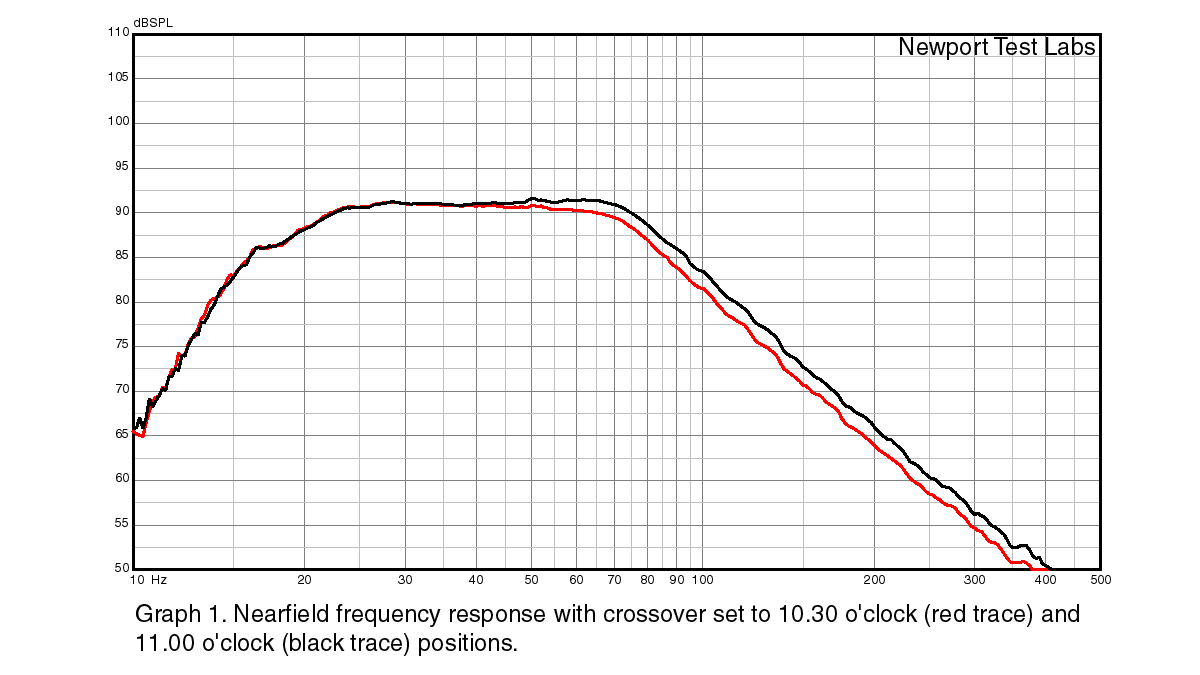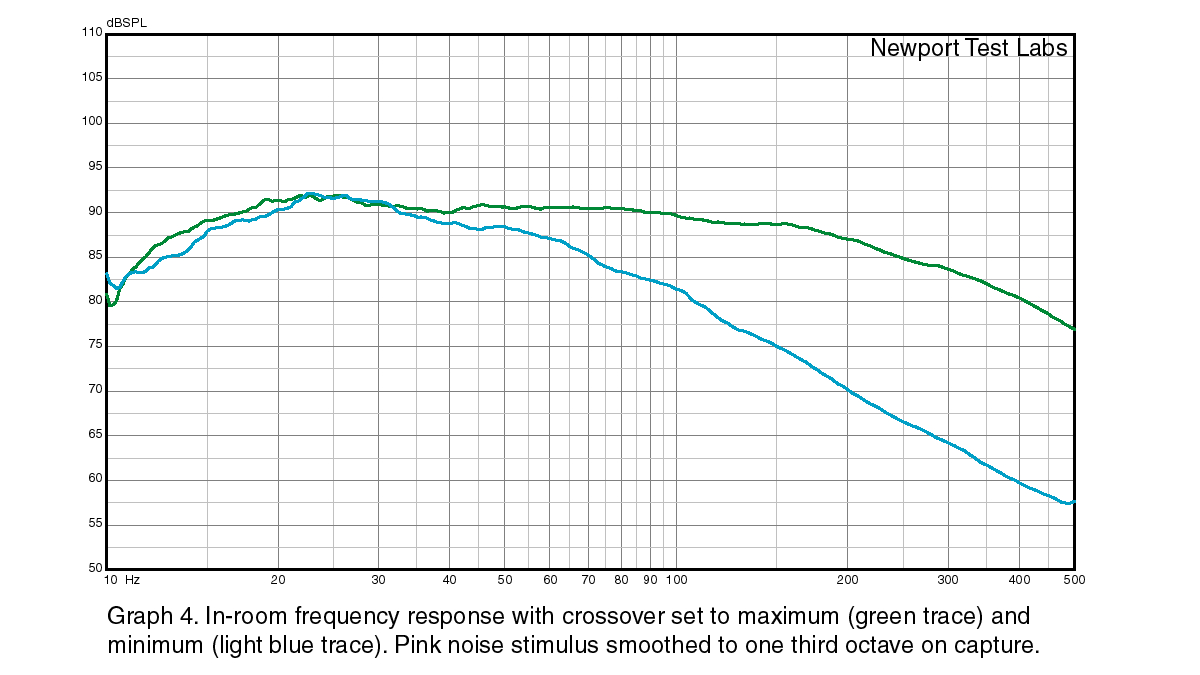What Hi-Fi? Verdict
For the price, the DB-12 subwoofer offers incredible performance in a simple package. While we have some minor design gripes, for the most part Velodyne Acoustics has hit it out of the park with the value-to-performance ratio of this sub.
Pros
- +
Incredible performance
- +
Small form factor
- +
Low price
Cons
- -
Filter control lacks labels
- -
Line/Sub Inputs
- -
Grille tag spoils clean look
Why you can trust What Hi-Fi?
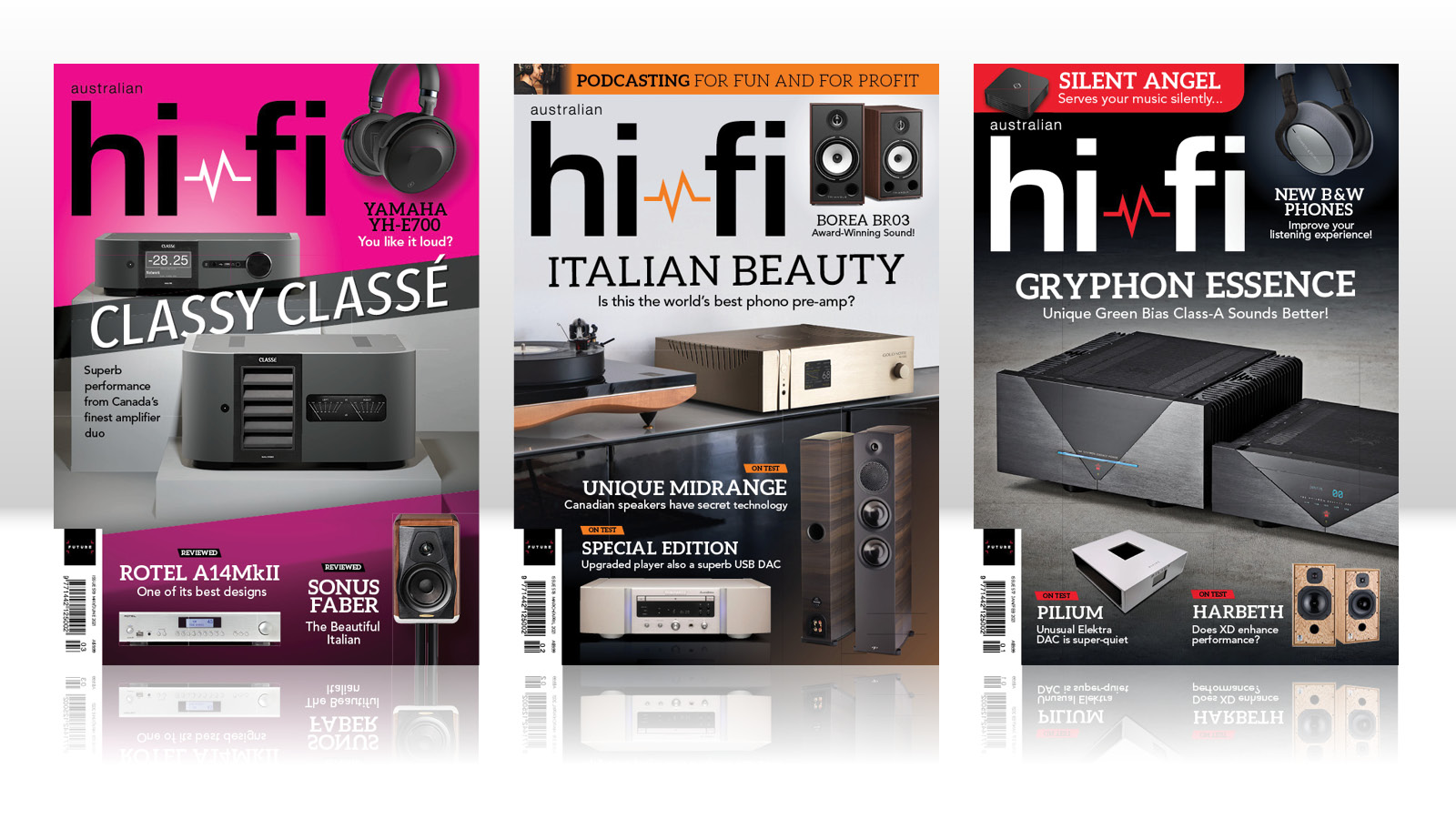
This review and test originally appeared in Australian Hi-Fi magazine, one of What Hi-Fi?’s sister titles from Down Under. Click here for more information about Australian Hi-Fi, including links to buy individual digital editions and details on how to subscribe.
Velodyne’s 'Deep Blue' subwoofer series, of which this DB-12 model is a part, is the first new range of subwoofers from this famous speaker maker following its sale to German company Audio Reference two years ago (see section later in review titled ‘Velodyne in Germany’).
David Hall, who was Velodyne’s founder and chief engineer, decided to sell the brand so he could concentrate on his other company, which makes sensor equipment that’s used in autonomous vehicles, such as those manufactured by Tesla and Google.
Entering the lidar industry might have seemed like a bit of a left turn for Hall, but in fact his inventive genius and technical expertise are such that during the time he owned Velodyne it was granted more patents for subwoofer design than any other subwoofer manufacturer, including such important patents as for a servo-controlled subwoofer (1984), sealed accelerometer (1984), dual-tandem voice-coil (1995), and an Energy Recovery Class-D amplifier.
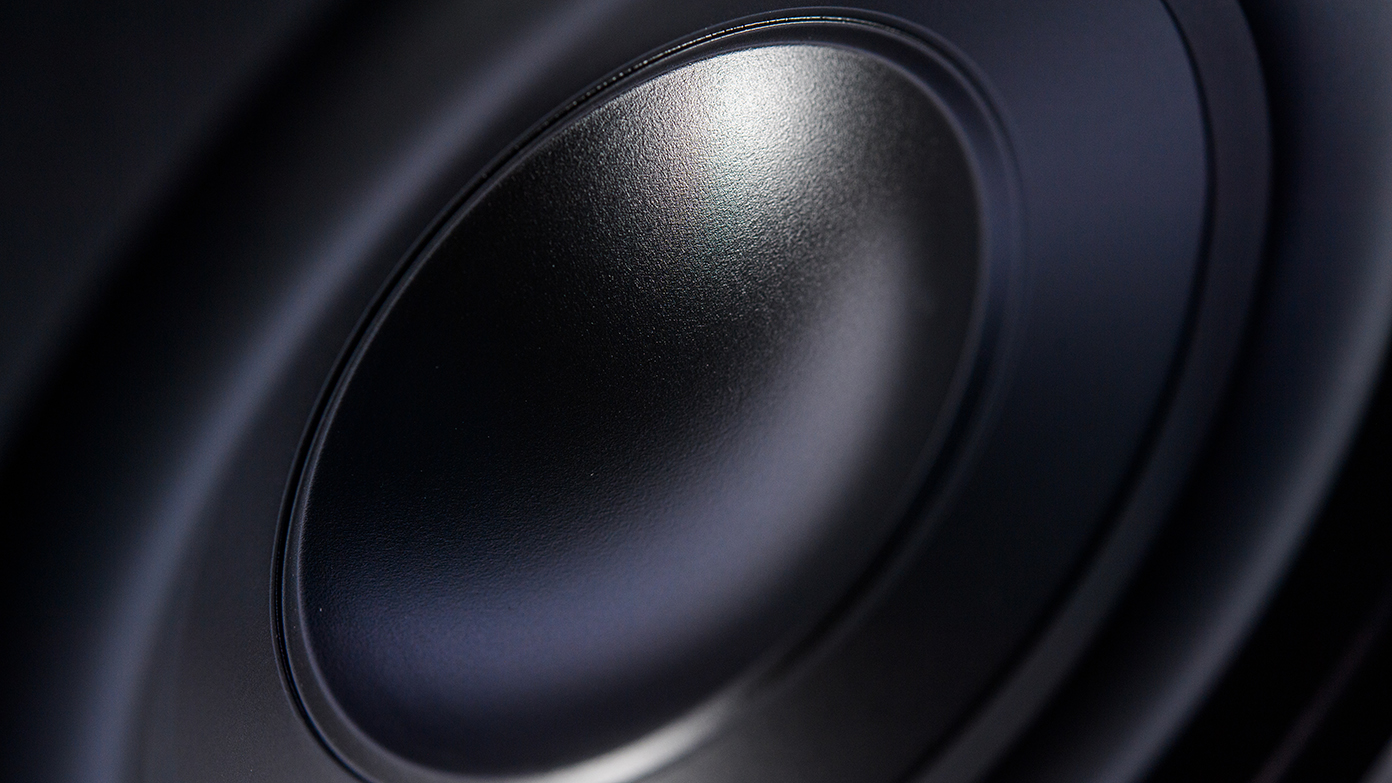
Velodyne also introduced the world’s first single-driver subwoofer with a volume of less than one cubic foot (28-litres), the first remote-controlled subwoofer, the first subwoofer to use a digital accelerometer and the first subwoofer to employ digital, one-touch room bass equalisation. The Stereophile Guide to Home Theatre once wrote of the company: “When Velodyne announces a new subwoofer, the earth trembles – literally.”
It seems that with this new DB-12, Velodyne is playing it safe, because it has only a few of Velodyne’s patented technologies inside it. It’s not servo-controlled, it’s not remote-controlled, it has no adjustable equalisation and rather than use an Energy-Recovery Class-D amplifier, it has a conventional linear Class-A/B amplifier inside it. And although it’s not large, it does have a volume of rather more than 28-litres.
Equipment
The unique technology the new DB-12 does have inside it is Velodyne’s famous double-vented high-excursion bass driver with its four-layer voice-coil and dual ferrite magnet. As its model number suggests, the bass driver has a nominal diameter of 12 inches (305mm), which makes it the second-largest bass driver in the ‘Deep Blue’ series – the other models being the DB-8, DB-10 and DB-15.
Despite Velodyne rating the DB-12’s bass driver with a diameter of 305mm, it’s actually rather larger again than this, because I measured its overall diameter at 310mm. However it’s the Thiele/Small diameter (the distance from the middle of the surround suspension on one side to the middle of the surround on the other) that is the most important specification because this is what determines the volume of air in front of the cone that will be turned into sound waves. On the DB-12, this is 250mm, which puts the effective cone area (Sd) at 490cm².
The latest hi-fi, home cinema and tech news, reviews, buying advice and deals, direct to your inbox.
Sd is an important specification because it means the Velodyne DB-12’s cone can ‘drive’ nearly half a square metre of air! By way of contrast, a typical 254mm (10-inch) diameter cone has a cone area of around 230cm², which means that two DB-10s won’t move as much air as a single DB-12. So sometimes, size is more important than quantity!
The DB-12 introduces a new industrial design for Velodyne, which sees the bass driver recessed into the front baffle and covered by a circular grille that is also recessed into the baffle so it ends up sitting flush with it, which makes for a really classy look.
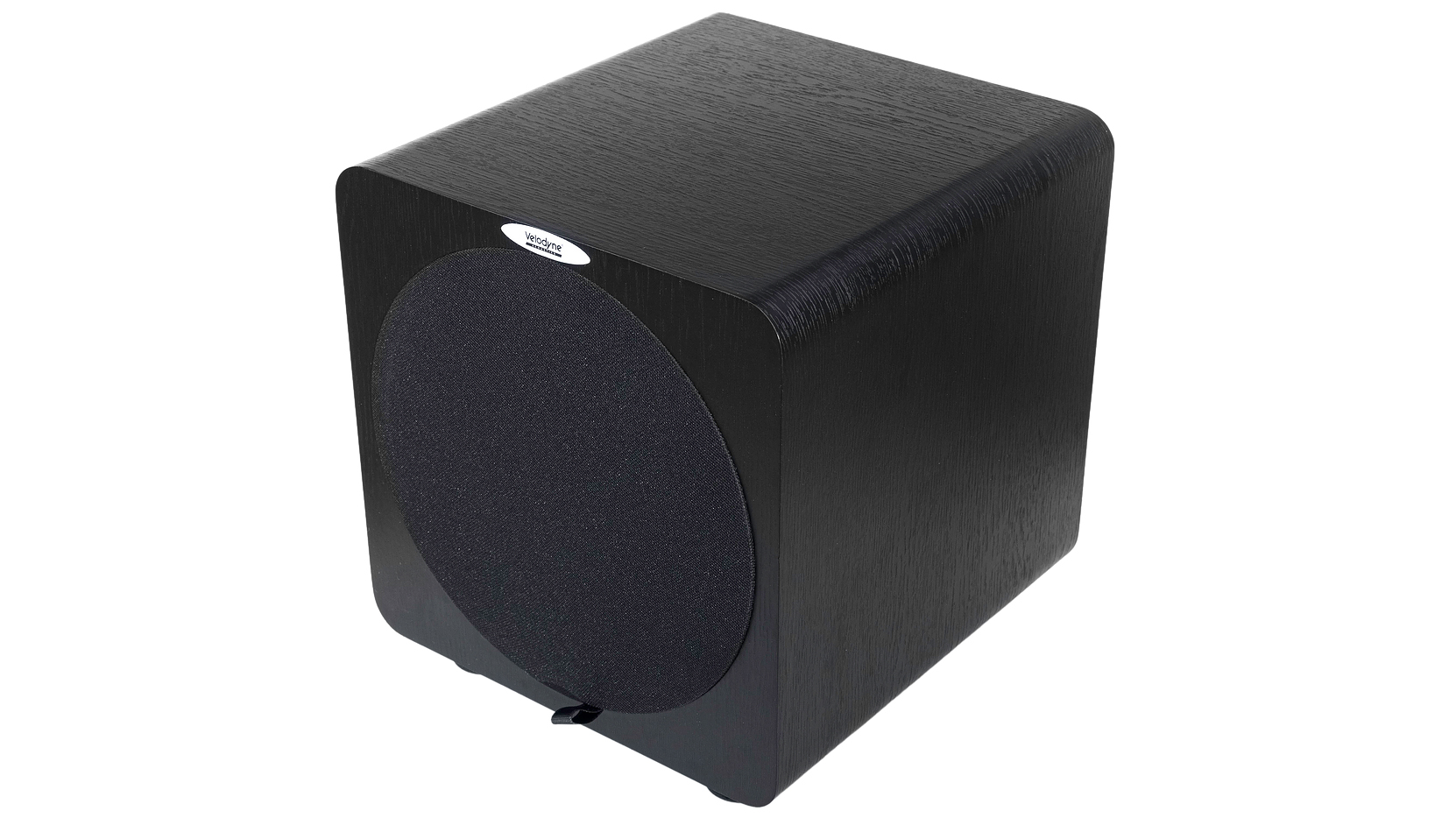
The only impediment to these good looks is that Velodyne has fitted a tiny cloth tag to allow you to easily remove this grille if you wish. This tag hangs out from the grille and, to my mind, looks a little silly. You could easily improve the looks by tucking the tag in or cutting it off entirely, but both tactics would then make it difficult to remove the grille.
As you can see, the bass driver occupies nearly the entirety of the front baffle, which is about 35cm on each side, which means that when standing on its four rubber isolation/damping feet, the DB-12’s top will be 37cm above floor level.
Around the back of the DB-12 is the 200×230mm amplifier plate that doubles as the heat-sink for the Class-A/B amplifier inside it that Velodyne rates with an output of 350-watts, so this, too, occupies nearly the entire rear of the subwoofer. Which means there isn’t any room on the front or the back for a bass reflex port, which in turn means that Velodyne’s new German owner is sticking with Velodyne’s philosophy of building only subwoofers that have sealed enclosures.
And why wouldn’t Velodyne want to stick with building subwoofers with totally sealed enclosures? On the technical side, the frequency response of a subwoofer with a sealed enclosure will be flatter across the pass-band with a superior and smoother roll-off below that pass-band than that of a bass-reflex enclosure, or even one that uses an auxiliary bass radiator. That response will also exhibit less phase shift, lower group delay and reduced ringing in the time domain.
On the physical side, sealed cabinet subwoofers are more forgiving of poor room placement, can be placed optimally in more positions in a room and, most importantly depending upon where in the world you live, there is no way for small animals to enter the cabinet and live inside.
Here in Australia, that could be any one of several different small native marsupials. Also, the electronics inside the cabinet are more isolated from the atmosphere, so there’s less chance of any rust or corrosion. And, of course, sealed subwoofers tend to be smaller in size physically and work better in smaller rooms.
Finally, and for some most importantly, sealed subwoofers generally sound more convincing when they reproduce the sound of low-pitched musical instruments, with most audiophiles reporting that they hear superior tonal quality, tighter and more articulate bass and reduced overhang.
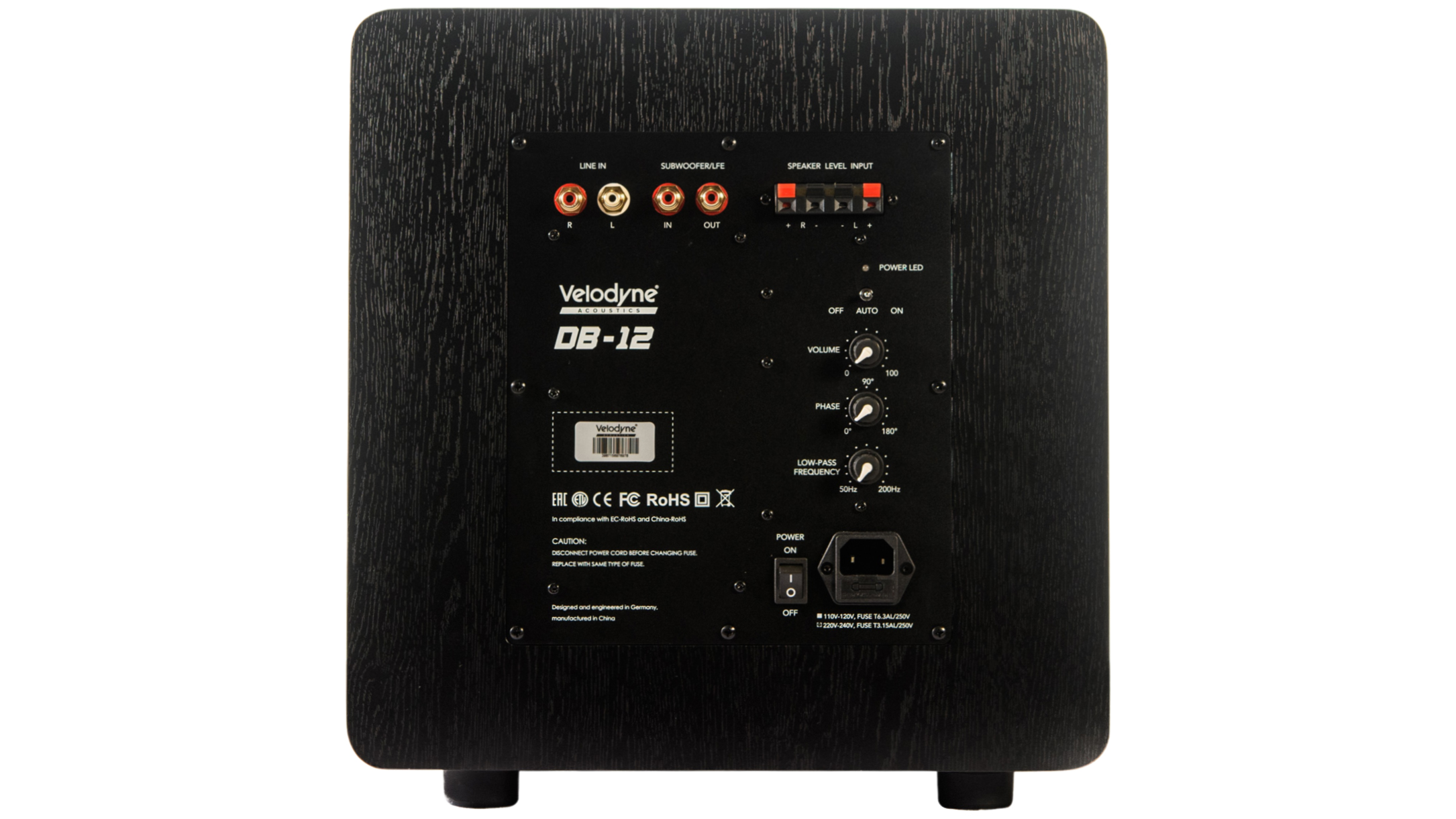
The amplifier plate has three pairs of inputs. There’s a pair (left/right) of line inputs via chromium-plated RCA terminals, a pair of terminals labelled ‘Subwoofer/LFE’ (about which more later) using the same terminal types, and a pair of speaker level inputs using ‘budget’ spring-loaded plastic ‘press-to-lock’ speaker terminals.
Control of the DB-12’s operation is entirely manual. The topmost of three plastic-knobbed rotary controls on the amplifier plate is a volume control which has a smooth operating action over its stated range of 0 to 100 with ten dots spaced evenly around it to enable different settings to be recorded if necessary for different applications.
Below the volume control is a phase control which, being rotary, allows you to continuously adjust phase between 0° and 180° rather than just switch between the two extremes. Again, there are ten dots spaced evenly around it so you can easily regain a particular setting.
The bottom-most of the three rotary controls is the low-pass filter, which is calibrated from 50Hz up to 200Hz with those self-same ten dots around the circumference.
I have to question why Velodyne elected to use dots rather than screen-print actual values, such as 50Hz, 60Hz, 80Hz, 90Hz etc. on the low-pass filter control. Having values, most particularly on the low-pass filter, would have made much more sense in helping owners with an initial rough setting on the way to a complete calibration.
Alongside the two-pin 240V fused mains input socket is a standard on/off rocker switch but you have a little more control over power settings than this single switch would seem to indicate.
A small three-way toggle switch lets you set the power so that the DB-12 is ‘Doubly Off’, always ‘On’ or in ‘Auto’ mode so that it switches itself on whenever necessary and to stand-by at other times, depending on whether or not the on-board signal-sensing circuitry detects an audio signal at one of the three inputs.
A small LED above the toggle switch will glow red, orange or green to indicate the Velodyne’s current power status. This LED is labelled ‘Power LED’, which seemed a little strange when simply the word ‘Power’ would have been sufficient – we don’t really need to be told that it’s an LED!
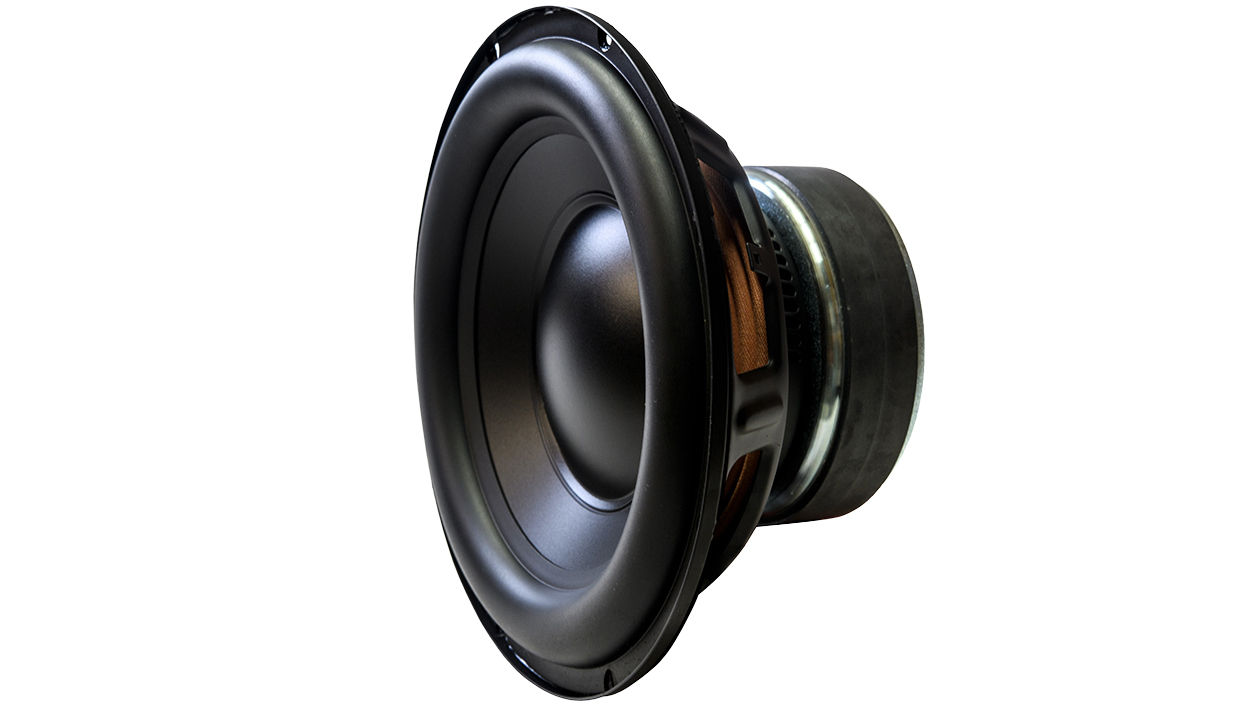
- Empty list
Velodyne in Germany
After 36 years of US ownership, the founder and owner of Velodyne, David Hall, sold his company to Mansour Mamaghani, the owner of Germany’s Audio Reference, in a deal that was inked on November 22nd, 2019.
Hall was keen to sell the company so he could concentrate on his new company, Velodyne Lidar, which makes lidars for autonomous vehicles, which he saw as the future. For his part, Mamaghani was keen to purchase Velodyne because his company had been the German distributor for more than two decades and he was a huge fan of the brand. The deal included all Velodyne’s stock, spare parts, patents, designs and tooling.
“We are very excited with the opportunity presented by the Velodyne purchase,” said Mamaghani at the time. “Our goal is to reinstate Velodyne as the market leader for compact high-powered subwoofers. We understand this will take some time, but we have already brought the Velodyne design team back together to review the existing product line and also our expectations for the future.”
Velodyne’s global operation is now based in Hamburg, in Germany, with the subwoofers being manufactured in China.
Listening sessions
Sealed subwoofers might be easier to position and calibrate than ported (bass reflex) ones, but that doesn’t mean you don’t have to put some time and effort into ensuring they’re in the best physical location in your room to ensure their maximum (and smoothest) output, but also that they are optimally interfaced with whatever piece of electronics you are using to drive them.
Rather than go into all the detail about how to do that in this review, I will instead point you in the direction of our expert guide (linked below) that tells you exactly what you have to do and how to go about it.
I would strongly recommend you follow exactly the information contained in it because if you don’t the DB-12 will not be operating in your room as well as it should – advice that applies no matter what brand or model of subwoofer you use.
If you position the world’s best subwoofer in the incorrect position in your room and/or fail to set its volume, phase and crossover controls correctly, it will definitely not perform at its best and could potentially sound awful.
You will, of course, also have to work out which of the three inputs you’re going to use. The only difference between the line input and the speaker input is that the line input is designed for voltages of less than one volt or so, sourced from a line output on your amplifier or AV receiver, whereas the speaker-level input is designed to be connected to your amplifier’s speaker terminals (or to the terminals of your speakers themselves, whichever involves the least wire).
In both cases, the DB-12 will get a full-range audio signal and you’ll have to use the DB-12’s own crossover control to roll-off the subwoofer’s output at the frequency that best-suits your main speakers.
The ‘Subwoofer/LFE’ input, on the other hand, is intended to be used in conjunction with an amplifier or AV receiver (or pre-amp) that has an LFE output. Such an output should have a filter to ensure that it will only deliver low frequencies to the DB-12.
In most of the subwoofers I have seen that have a separate LFE input, any signal you input via the LFE input will bypass the subwoofer’s internal crossover control so you don’t have two sets of high-cut filters in the signal path. The Velodyne DB-12’s crossover control remains in-circuit all the time, irrespective of which line-level input I used, so its Subwoofer/LFE input is really just a duplicate of its Line Input.
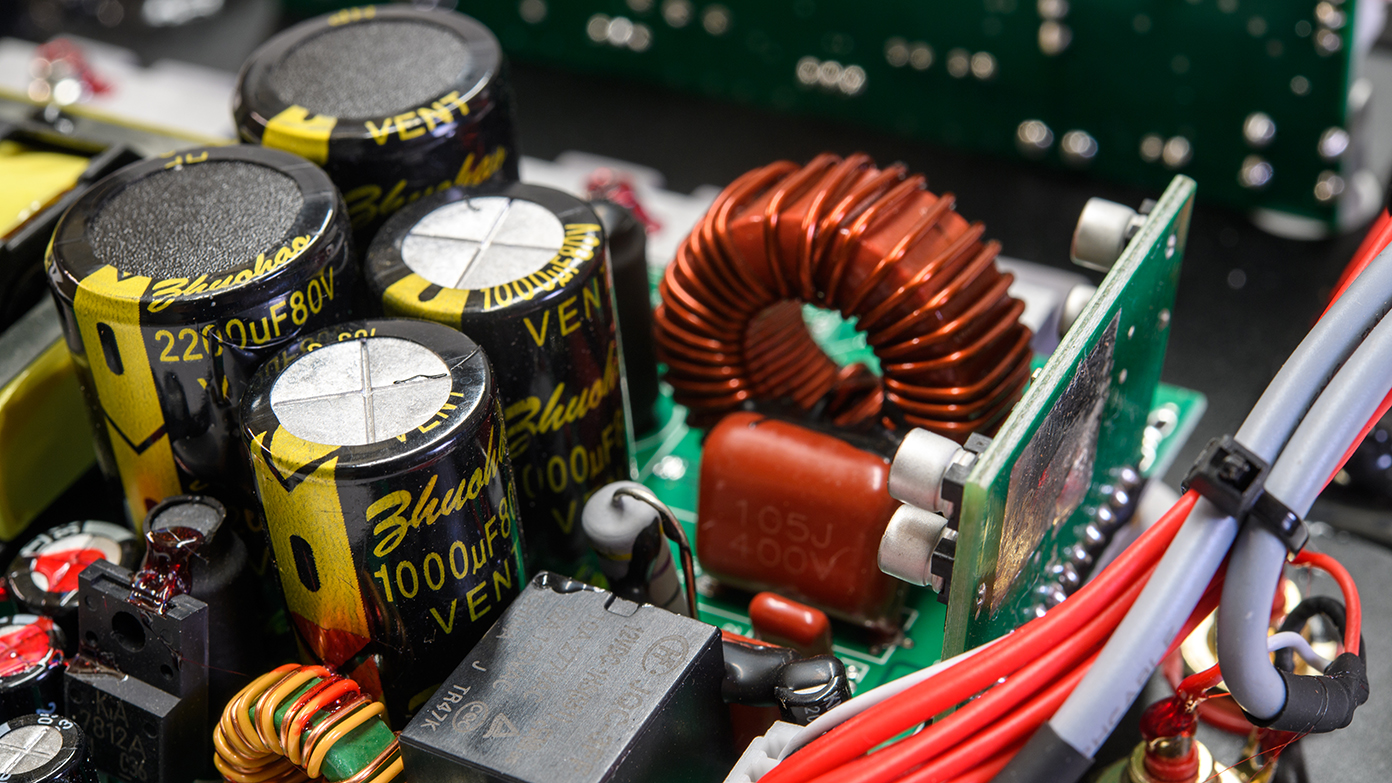
Telarc’s Bachbusters is always a good album to get a subwoofer’s amplifier warmed up and its bass driver’s suspension loosened, and it was obvious right at the outset that I was going to be writing a positive review of this new Velodyne DB-12 because the bass I heard right from the outset, while the amp was stone-cold and the bass driver’s suspension was ‘as new stiff’ was totally extended into the bottom-most octave and incredibly clean.
Most importantly, there was none of the ‘tizz’ that you can get from subwoofers which have bass-reflex ports – the sound was uniformly taut and even right across the operational bandwidth.
When I turned up the volume, the DB-12 responded beautifully: the volume levels in my room simply became greater, pressurising the air in it perfectly, with no distortion, and no ‘boom’ at all – just clean, powerful sound.
And, though I listened very carefully, I never once heard any unwanted ‘hangover’ of sound when one deep bass note was followed quickly by another. The precision of the Velodyne’s delivery of fast bass runs, whether those are created by a keyboard or a fretted instrument, is impressive.
There are very few ‘must have’ non-classical albums that have low bass, but if you count Dark Side of the Moon as one of them (and why would you not?), you may not know that the intro track, Speak to Me/Breathe, has frequencies on it that are below 30Hz. Listen to that track with the volume of the Velodyne DB-12 cranked up and you’ll not only hear those frequencies but will also feel them, as the air in your room – and maybe even objects in your room! – vibrates.
It’s not quite the same bass you would experience at a live concert, but it’s a very impressive approximation, and since no-one will be attending concerts any time soon, that will have to be good enough.

Jennifer Warnes’ Famous Blue Raincoat likely won’t be on your ‘must-have’ list, but it will be in most audiophiles’ collections, so I’d suggest using the track Joan of Arc, where she duets with Cohen, to audition the Velodyne’s low-bass capabilities, because you’ll be listening to 34Hz.
And if you haven’t heard this album for a while, do take the time to re-listen to First We Take Manhattan and Song of Bernadette with refreshed ears. I took the time to listen to the entire album and was consistently impressed by the sound quality of the Velodyne DB-12 while I did. I had no doubt at all that it is a very musical subwoofer, delivering the music exactly as it should whilst at the same time not drawing any attention to itself.
For almost the entirety of this review I used the Velodyne DB-12 as an add-on to a conventional stereo system, using the same electronics, but three different pairs of speakers just to see how well it integrated with them.
If you have a pair of small two-way stand-mount speakers (whether you’re using them on stands or on shelves) you most certainly should consider adding a DB-12. With the DB-12’s crossover set to maximum position, the improvement in the sound was unimaginable. All of a sudden it was like I was listening to a pair of large floor-standing loudspeakers.
Bass that was simply not present previously suddenly presented itself — bass lines appeared from nowhere, kick drum sounds that had previously just been ‘sounds’ suddenly became viscerally real. And even though I obviously knew where the DB-12 was, because I’d positioned it myself, if I closed my eyes, I could not locate it – its output was fully included within the cohesive image presented by the stand-mounts.
Trialled with a pair of three-driver 2.5-way speakers the addition of the Velodyne DB-12 was almost as dramatic. I needed to turn back the DB-12’s crossover control to around the 9 o’clock position to ensure a seamless transition, but once I’d done this, it was once again as if I was listening to a pair of much larger loudspeakers.
This time it was only the deepest bass that improved, but the important word to note there is ‘improved’. The bass took on more depth and solidity, and became more real. But there was also added low-frequency extension – the DB-12 delivered frequencies that were beyond the capabilities of those loudspeakers.

When I used the Velodyne DB-12 in conjunction with a very large pair of four-driver, three-way loudspeakers, this time with the crossover set to minimum, I no longer had that ‘wow’ experience of hearing bass I was not able to hear with those speakers on their own, but when I listened in A–B mode, switching the subwoofer in and out while I listened, I was maintaining an 8 out of 10 score for preferring the sound quality when the Velodyne was playing. (The missing ‘2’ was simply because the music I was using on those occasions didn’t contain any low bass).
In a 5.1-channel home theatre system, using only small two-ways all around (that is, three identical speakers across the front, and two at the rear) the DB-12 proved to be more than up to the challenge of reproducing the deepest sounds contained on any of the movie soundtracks I own, and it did so at totally realistic and completely authentic levels.
The low-frequency sound effects on Jurassic Park, for example, sounded absolutely sensational. The same was true when I watched NASA’s DVD Ascent – Commemorating Shuttle and listened to the sound of the shuttle launches, which contain prodigious amounts of energy below 30Hz. The power of the sound from the DB-12 was almost overwhelming.
I also used the DB-12 when watching Gaspar Noé’s Irreversible. Not to watch the movie, of course (it’s so awful that many cinema-goers walked out at its premiere) but to listen to the soundtrack, because the first 30 minutes of it has a 28Hz sine wave signal mixed in. Listening via the Velodyne DB-12 I could hear it quite clearly yet the level is so low that if you’re not using a subwoofer, you likely won’t hear it at all.
Why did Noé add the sound? Producers often add low-frequency sounds to their movies to induce a sense of foreboding in viewers and ramp up the tension, but it’s said that in this case it was done simply to drum up publicity as a result of reportage about people leaving the theatre.
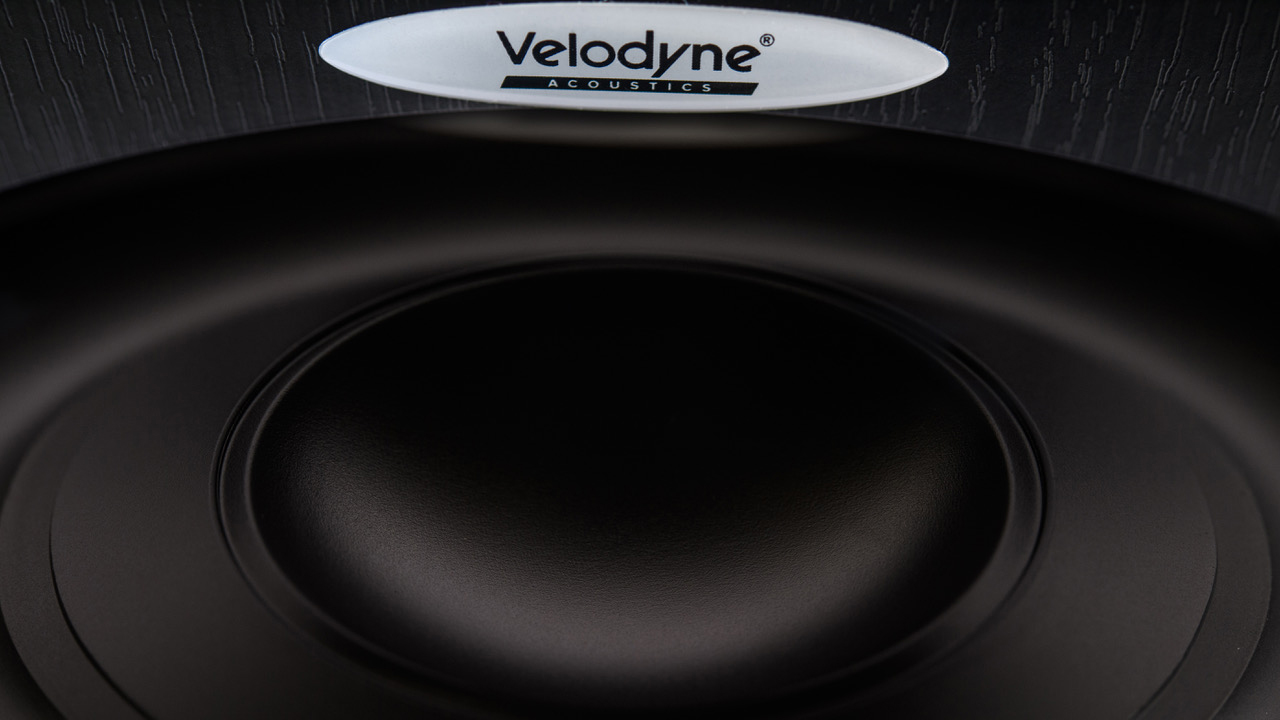
But don’t fall into the trap of thinking subwoofers in 5.1-channel systems are all about reproducing movie sound effects. Indeed most of the movies I watch don’t have any real sound effects at all.
But if you watch a movie with the DB-12 switched off, then watch it again with the DB-12 switched on, you’ll find that everyday sounds (footsteps on wooden floors, doors closing, traffic noise and such-like), have low-frequency components whose realism is enhanced by using a subwoofer that can deliver them realistically – and the Velodyne can certainly do that!
So subwoofers aren’t always about space shuttles, submarine depth charges, and low-frequency sine waves. And of course most movies have a musical soundtrack of one sort or the other, and you’ll find that if you listen with the DB-12 you’ll discover that the lower-pitched instruments are being reproduced rather well, with a fullness and richness you may not previously have experienced without a subwoofer – and that will be true no matter whether sound is orchestral, or somewhat more sparse.
Final verdict
By keeping it simple, and playing to the brand’s strengths, Velodyne’s new owners have delivered a definite winner. The DB-12 is not only an outstandingly good subwoofer, it’s also available at a price so low that I didn’t believe it at first, and had to go back to double-check it. Bargain!
In-depth lab test results
Graph 1 shows the frequency response returned by the Velodyne DB-12 when Newport Test Labs used a nearfield microphone measurement technique – one that simulates the response that would be obtained if the subwoofer were measured in an anechoic chamber.
The black trace shows the result obtained when the rotary crossover control was set to the 11.00 o’clock position and the red trace when it was set to the 10.30 position.
You can see the two responses are the same up to a frequency of 40Hz, after which the black trace climbs a dB or so before starting to roll off at 70Hz, while the red trace falls a few dB before rolling off a little prior to 70Hz.
You don’t need me to tell you that these are spectacularly flat frequency responses! Overall, I’d put them as being 16Hz to 95Hz ±3dB with the crossover control set to either of these positions.
Graph 2 shows the nearfield frequency response of the Velodyne DB-12 across a range of different settings for the crossover control, including the maximum and minimum settings. With the crossover set to minimum (dark blue trace), the response is 16Hz to 80Hz ±3dB.
In the maximum setting (black trace) you can see that there’s a lift in the response that peaks at 70Hz which extends the upper 3dB down-point of the overall response. With the crossover control at this setting, the response extends from 22Hz to 140Hz ±3dB, a result that’s pretty much in line with Velodyne’s own specification of 26Hz to 140kHz ±3dB.
Graph 3 is identical to Graph 2, except that all crossover settings other than the maximum and minimum have been removed, for clarity.
Graph 4 shows the in-room frequency response of the Velodyne DB-12, this time measured with pink noise, rather than a swept sine signal. Pink noise is rather more demanding than a swept sine signal, as it requires the subwoofer to produce all frequencies within its passband at the same time.
This additional acoustic load seems to have smoothed out the peak in the response shown in the nearfield response of Graph 1 for the maximum setting of the control. Shown as the green trace here, the in-room frequency response measured for the DB-12 was 13Hz to 200kHz ±3dB.
Overall, the Velodyne DB-12 subwoofer returned excellent results across all the acoustic tests carried out by Newport Test Labs.
Australian Hi-Fi is one of What Hi-Fi?’s sister titles from Down Under and Australia’s longest-running and most successful hi-fi magazines, having been in continuous publication since 1969. Now edited by What Hi-Fi?'s Becky Roberts, every issue is packed with authoritative reviews of hi-fi equipment ranging from portables to state-of-the-art audiophile systems (and everything in between), information on new product launches, and ‘how-to’ articles to help you get the best quality sound for your home.
Click here for more information about Australian Hi-Fi, including links to buy individual digital editions and details on how best to subscribe.

